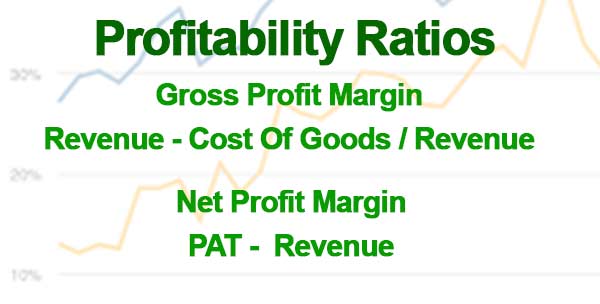
The analysis of profitability assists businesses in determining growth opportunities, items of stock that move quickly or slowly, market trends, and other relevant factors. You will be able to better monitor the performance of your company if you conduct an analysis of the profits, which are the sum of money that is left over from the initial investment after all of the overhead expenses have been subtracted out.
To provide leaders with a comprehensive understanding of the situation, profitability analysis draws on both qualitative and quantitative analytics. ERP systems collect data from a wide variety of business processes and make it possible for that data to flow freely between those processes. The development of ERP solutions has made it possible to gain access to information that is both more open and more useful than ever before.
The capacity of a business to bring in profits can be evaluated with the help of a profitability analysis. The analysis helps to identify ways to improve product mixes in order to maximise profits both in the short term and in the near term. Additionally, it can be utilised to assist investors and analysts in deciding whether or not a company would be a good investment for their portfolio.
The various relationships with customers and suppliers are analysed in depth during profitability analysis. This makes it easier to determine which customers are the most profitable and which are the least profitable. In addition to this, it offers valuable insights regarding customer demographics, geographic considerations, and product types, all of which can be utilised to evaluate potential profit. When making their decision, business leaders will occasionally take into account the information before deciding to discontinue a product.
When conducting an analysis of a company's profitability, it is critical to take into account all of the associated costs as well as the revenues associated with the business. This includes costs that are fixed and costs that are variable, as well as revenues and costs that are one-time only. Additionally, it is essential to keep a close eye on any shifts in the business climate that may have an effect on the profitability of the company.
There are many different approaches that can be taken when evaluating the profitability of a business; however, the following are the three approaches that are most frequently utilised.
The ability of a company to generate income can be measured and evaluated with the assistance of profitability ratios. They demonstrate how efficiently a company uses its resources to generate profits and create value for its shareholders. A higher ratio demonstrates that the company is profitable and is generating an adequate amount of revenue, profit, and cash flow. This is demonstrated by the fact that the ratio is higher.
A company's ability to generate revenue in relation to its costs, assets, and equity can be evaluated using profitability ratios. This evaluation is done over time. The operating profit margin, the return on assets (ROA), and the return on equity are three of the most common types of profitability ratios (ROE).
Transaction analysis is a useful tool for determining which customers generate the most profit for a business. In addition, it is helpful to determine which products and product combinations are purchased the most frequently. Calculating the profit margin for each individual customer is by far the most common approach. Nevertheless, profit per customer share is also an important consideration at times.

After deducting the costs of goods sold, the term 'gross profit' refers to the amount of profit that remains from the total revenue earned (COGS). This report is extremely important because it includes the dividends in addition to the administrative and office costs that it covers. The higher the gross profit margin, the higher the company's overall profitability will be.
In terms of a company's performance, one of the ratios that is considered to be among the most important is the quick ratio. If the quick ratio is low, this indicates that sales were weak during the specified time period, which will eventually have an effect on the net profit margin. This analysis will assist investors in recognising weak points in their business practises and facilitating the timely adoption of decisions that will strengthen their overall performance.
Return on equity, also known as ROE, refers to the percentage of a company's earnings that are returned to shareholders in exchange for the investments those shareholders have made in the business. The greater the ROE, the greater the dividends that shareholders will receive from the company. Returns on capital employed (ROCE) and Return on assets (ROA) are two metrics that can be used to evaluate a company's level of productivity.
A company's ability to turn sales into profits is an essential aspect that can be evaluated using the margin ratio. The percentage of gross profit, the percentage of operating profit, and the percentage of net profit are a few examples. It is also possible to refer to it as earnings before interest, taxes, depreciation, amortisation, and stock-based compensation. This is another way of expressing it.
The leaders of businesses need to constantly evaluate the various conditions of the market as well as the relevant patterns of customer behaviour. This assists in the identification of trends and business cycles and enables them to plan for the future in a manner that is most appropriate for the requirements and expansion of their organisation.